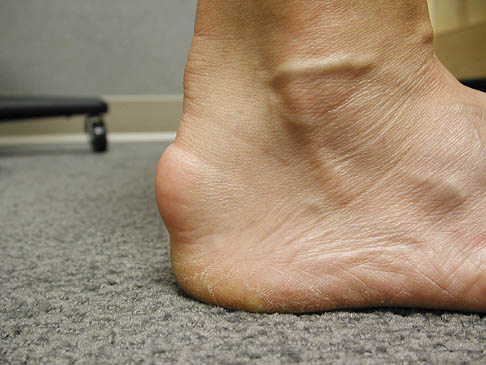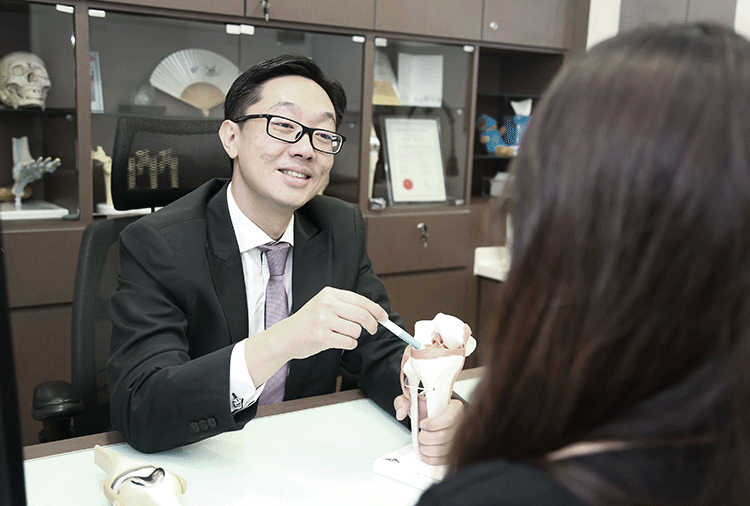Achilles tendonitis is a condition that causes pain and inflammation in the Achilles tendon, which connects the calf muscles to the heel bone. This common ailment particularly affects athletes and active individuals, but it can also occur in people who suddenly increase their activity level or who have certain biomechanical issues.
What Is Achilles Tendonitis, And Why Is Treatment Important?
Achilles tendonitis is characterised by inflammation of the Achilles tendon, resulting in pain, swelling, and stiffness in the back of the lower leg. This condition is typically caused by overuse or repetitive stress, often from activities such as running, jumping, or sudden increases in physical activity.
Treatment is important because it helps alleviate pain, reduce inflammation, and prevent the condition from worsening. Without proper treatment, Achilles tendonitis can lead to more severe problems, such as tendon tears or ruptures, which require more intensive treatment and longer recovery periods. Early intervention with rest, physical therapy, and other treatments can promote healing and help maintain an active lifestyle.
What Are The Causes And Risk Factors Of Achilles Tendonitis?
Causes
- Overuse – Repetitive stress on the Achilles tendon from activities such as running, jumping, and sudden increases in physical activity.
- Sudden Increase in Activity – Rapidly increasing the intensity or duration of physical activities without proper conditioning.
- Improper Footwear – Wearing shoes that do not provide adequate support or are worn out can contribute to the development of Achilles tendonitis.
- Running on Hard Surfaces – Exercising on hard or uneven surfaces can place extra strain on the Achilles tendon.
- Tight Calf Muscles – Limited flexibility in the calf muscles can increase tension on the Achilles tendon.
- Inadequate Warm-up – Not properly warming up before physical activity can lead to tendon strain and injury.
Risk Factors:
- Age – The risk of Achilles tendonitis increases with age as the tendon becomes less flexible and more prone to injury.
- Gender – Men are more likely to develop Achilles tendonitis than women.
- Sports Participation – Athletes involved in sports that require running, jumping, or sudden changes in direction are at higher risk.
- Foot Structure – Flat feet or high arches can place additional stress on the Achilles tendon.
- Obesity – Excess body weight increases the load on the Achilles tendon, making it more susceptible to injury.
- Previous Injuries – A history of Achilles tendon injuries can increase the likelihood of developing tendonitis.
What Are The Common Symptoms Of Achilles Tendonitis?
Recognising the symptoms of Achilles tendonitis is crucial for early diagnosis and effective treatment. This condition can significantly impact physical activity and overall quality of life, so being aware of its signs is important for timely medical intervention.
- Pain – Pain along the back of the leg near the heel, which may start as a mild ache and gradually worsen with activity. Pain is often more severe after prolonged periods of inactivity, such as in the morning.
- Stiffness – Stiffness in the Achilles tendon, especially after periods of rest or inactivity, is common.
- Tenderness – The area around the Achilles tendon may be tender to the touch, particularly when squeezed or pressed.
- Swelling – Swelling and thickening of the tendon can occur, making the area appear larger and more sensitive.
- Limited Range of Motion – Difficulty flexing the foot or standing on tiptoe due to pain and stiffness.
- Weakness – Weakness in the calf muscles can result from inflammation and pain in the Achilles tendon.
- Warmth – The affected area may feel warm to the touch, indicating inflammation.
How Is Achilles Tendonitis Diagnosed?
Diagnosing Achilles tendonitis involves a thorough clinical examination and a variety of diagnostic tests to confirm the condition and assess its severity. Accurate diagnosis is essential for effective treatment and prevention of further injury.
Clinical Examination
- Medical History – The doctor will ask about the patient’s history of symptoms, including the onset, duration, and any activities that exacerbate the pain.
- Visual Inspection – The Achilles tendon area will be inspected for signs of swelling, redness, or heat. The doctor will look for any visible abnormalities or deformities.
- Palpation – The tendon will be gently pressed to identify tenderness, swelling, or thickening. Pain is often most intense, about 2-6 centimetres above the heel.
- Range of Motion – The doctor will assess the range of motion of the ankle and foot, noting any limitations or pain during dorsiflexion (when the foot is pulled up toward the shin).
- Functional Tests – The patient may be asked to perform specific movements or activities, such as standing on tiptoe or walking, to evaluate pain levels and functional impact.
Diagnostic Tests
- Ultrasound – Ultrasound imaging provides real-time images of the Achilles tendon, allowing the doctor to visualise inflammation, tendon thickening, and potential tears.
- MRI – Magnetic Resonance Imaging (MRI) offers detailed images of soft tissues and is useful for assessing the extent of tendon damage, including partial tears and tendinosis.
- X-rays – While X-rays cannot directly visualize the tendon, they are useful for ruling out other conditions like bone spurs or heel bone abnormalities that may contribute to tendon pain.
- CT Scan – A Computed Tomography (CT) scan may be used in some cases to assess complex structural issues, although it is less commonly employed for tendonitis.
- Tendon Degeneration Test – In certain cases, additional tests may be performed to evaluate the degree of degeneration or structural changes in the tendon.
What Are The Achilles Tendonitis Treatment Options?
Achilles tendonitis is an inflammation of the Achilles tendon, which connects the calf muscles to the heel bone. It is often caused by overuse or excessive strain on the tendon and can lead to pain, swelling, and stiffness. Treatment aims to reduce pain, promote healing, and restore function. Here are the primary treatment options:
Rest and Activity Modification:
- Rest – Avoid activities that stress the Achilles tendon, such as running or jumping, to allow for healing.
- Activity Modification – Substitute high-impact activities with low-impact exercises like swimming or cycling to maintain fitness while minimising stress on the tendon.
Ice Therapy:
- Application – Apply ice packs to the affected area for 15-20 minutes several times a day to reduce swelling and numb pain.
Medications:
- Nonsteroidal Anti-Inflammatory Drugs (NSAIDs) – Over-the-counter NSAIDs like ibuprofen or naproxen can help reduce pain and inflammation.
- Acetaminophen – Provides pain relief if NSAIDs are not suitable or if additional pain management is needed.
Physical Therapy:
- Strengthening Exercises – A physical therapist can develop a program to strengthen the calf muscles and improve tendon support.
- Stretching Exercises – Gentle stretching exercises can help relieve tension on the Achilles tendon and improve flexibility.
- Eccentric Exercises – Specific eccentric exercises, where the tendon is stretched while the muscle is contracting, can be effective in treating Achilles tendonitis.
Bracing and Support:
- Heel Lifts – Wearing heel lifts or orthotic inserts can reduce stress on the Achilles tendon by elevating the heel and decreasing strain.
- Ankle Brace – An ankle brace can provide additional support and stability to the tendon.
Injections:
- Corticosteroid Injections – Injecting corticosteroids into the affected area can provide temporary relief from pain and inflammation.
- Platelet-Rich Plasma (PRP) Injections – PRP therapy involves injecting a concentration of platelets from the patient’s own blood to promote healing and reduce inflammation.
Surgical Options:
- Arthroscopic Surgery – A minimally invasive procedure using small incisions and a camera to remove degenerated tissue or repair the tendon. This is typically considered if conservative treatments are ineffective.
- Tendon Repair Surgery – In severe cases where the tendon is significantly damaged or ruptured, surgical repair or reconstruction may be necessary.
Alternative Therapies:
- Acupuncture – Some individuals find relief through acupuncture, which involves inserting thin needles into specific points on the body to alleviate pain and promote healing.
- Massage Therapy – Therapeutic massage can help reduce muscle tension, improve circulation, and alleviate discomfort around the Achilles tendon.
Prevention Strategies For Patellar Tendonitis
Achilles tendonitis is an overuse injury of the Achilles tendon, which connects the calf muscles to the heel bone. It can cause pain, stiffness, and swelling in the affected area. Effective prevention strategies aim to alleviate symptoms, promote healing, and prevent recurrence. Here are some strategies:
- Always perform a thorough warm-up before engaging in physical activity to prepare the muscles and tendons for movement. Likewise, cool down and stretch after activity to prevent stiffness and reduce the risk of injury.
- Gradually increase the intensity and duration of physical activities to allow the Achilles tendon to adapt to increased demands. Avoid sudden increases in activity levels.
- Incorporate calf-strengthening exercises into your regular fitness routine to build strong muscles that support the Achilles tendon. Eccentric calf raises are particularly beneficial.
- Perform exercises such as calf raises, toe walking, and resistance band exercises to strengthen the calf muscles and Achilles tendon.
- Regularly perform stretching exercises to maintain flexibility in the calf muscles and Achilles tendon. Include stretches such as the gastrocnemius and soleus stretches.
- Wear shoes that provide adequate support and cushioning for the heel and arch. Replace worn-out shoes regularly to maintain proper foot support.
- Avoid overtraining and allow adequate rest and recovery between workouts. Overuse and repetitive strain can increase the risk of Achilles tendonitis. Listen to your body and take breaks when needed.
- Incorporate a variety of activities into your fitness routine to reduce repetitive strain on the Achilles tendon. Engage in low-impact activities such as swimming, cycling, or yoga.
- Maintain a healthy lifestyle by eating a balanced diet, staying hydrated, getting enough sleep, and managing stress. These factors contribute to overall musculoskeletal health and reduce the risk of tendon injuries.
- Schedule regular check-ups with a healthcare professional to monitor tendon health and address any underlying issues that may contribute to Achilles tendonitis. Early detection and intervention can help prevent progression and improve treatment outcomes.






